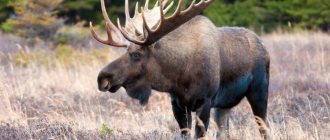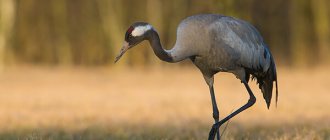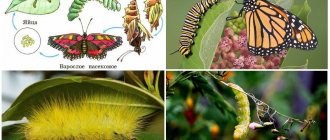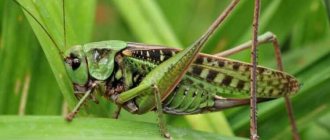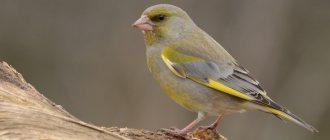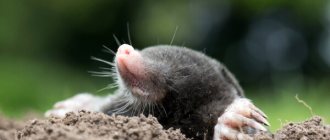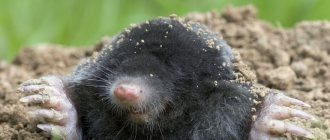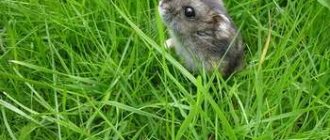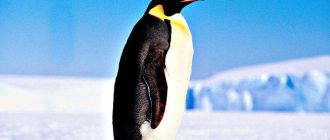- Wild animals
- >>
- Mammals
Elk , or Alces alces, is a giant among artiodactyl mammals. It was called Sokhaty because of its bulky horns, reminiscent of a plow in shape. The beast is widely distributed throughout the northern forests of Europe, Asia and the North American continent. It differs from other representatives of the deer family in its long legs, short but massive body, high withers, and large long head.
Origin of the species and description
Photo: Moose
It is not known exactly where this species of artiodactyls originated. Typical features inherent in elk were found in the early Quaternary period. Its appearance is attributed to the Upper Pliocene and is associated with a related species - the North American Cervalces. One Quaternary species is distinguished, corresponding to the lower Pleistocene – the broad-fronted elk.
It is he who can be called the progenitor of the moose that are found on the territory of the Russian Federation. The ancestors of this species, corresponding in appearance to the modern description, were found during the Neolithic in the steppes of Ukraine, the Lower Volga region and Transcaucasia, on the Black Sea coast, in Ireland and England, Western Europe, but did not move to the Balkans and Apennines.
Video: Moose
The artiodactyl occupies large areas in the northern part of Europe, Asia, and America. By the beginning of the last century, the range had narrowed, but measures to restore the population led to the fact that the elk began to be found again in the forests of Eurasia as far as the Vosges and the mouth of the Rhine. The southern border descends to the Alps and Carpathians, covers part of the steppe zone of the Don basin, Western Transcaucasia, and runs through the forest zone of Siberia up to the Ussuri taiga.
The animal thrives in Norway, Finland and Sweden. In Russia it is found everywhere in the forest zone, except Sakhalin and Kamchatka. Found in northern Mongolia and northeastern China. On the American continent - in Canada. The restored population occupies the entire forest area of the United States. The animal is unsightly in appearance. The head is strongly elongated and sits on a powerful neck. Her artiodactyl is held almost at the level of the humped withers.
The impressive size of the muzzle is given by the large nose with a complex cartilaginous structure. It goes into the upper wrinkled, drooping lip.
The large ears are very mobile and pointed at the top. The tail is half the length of the ear. It completes the sloping croup and is almost invisible. A pouch-like outgrowth called an earring hangs from the neck. It is more developed in males and can reach a length of 40 cm, but more often no more than 25 cm. The earring grows in length until the age of four, then shortens and becomes wider.
Commercial value
The moose quickly gets used to life at home. They treat milking calmly. Their milk is much fattier than cow's milk and contains much more proteins. In four months, a moose cow produces approximately 500 liters of milk.
Moose feel great in a harness and with a rider.
Moose meat is used for food, making sausages and canned food. Horns have found application in pharmacology.
Appearance and features
Photo: Animal moose
The fur of the elk has a black-brown color, without the “mirror” on the back that is usual for its relatives. The neck and withers are covered with longer hair. The legs are lighter in color than the body. The hooves are large, narrow, elongated and pointed. The side hooves are placed quite close to the ground. When moving through soft soil, swamps, or snow, they rest on the surface, redistributing the load and facilitating movement.
Males grow huge horns that spread out to the sides. They grow almost horizontally at the base and have no branches. Towards the ends, there are deer-type appendages, but most of them are located along the edge of the expanding flat section, the so-called “spade”.
The span of the horns reaches 180 cm, and the weight reaches 40 kg. Their rough surface is brown in color. In the European species, the spade has a small number of finger-like processes; in its North American relatives, their number reaches forty. In young individuals, thin, branchless horns grow in the first year of life. Shovels with shoots appear only by the fifth.
The animal sheds its decorations from its head by December, and new ones begin to grow in April. Females are hornless. Adult specimens have a body up to 5 m long, the height at the humpbacked withers can reach up to 2.4 m, weight about 600 kg, females are smaller and lighter than males. In Canada and the Far East, the weight of individual individuals reaches 650 kg. Powerful legs and hooves serve as protection for them.
Large weight and bulkiness do not prevent this long-legged animal from quickly moving through the forest and windfalls, swamps; it can easily overcome a two-meter fence or ravines. The average speed when walking is 9 km/h, when running up to 40 km/h. Moose can cross wide bodies of water (3 km) and dive deep. Cases have been recorded when animals swam across the Rybinsk Reservoir (20 km); Scandinavian and American observers have similar results.
Horns
The biggest pride of a moose is its antlers. It was because of them that he became prey for humans. Even in ancient times, elk antlers in the house were considered the main prey of a hunter; they were a symbol of dexterity and good luck in hunting. The weight of such horns can reach an average of 20 kg and this is not surprising, because their span is almost two meters.
The base of the horns is a short trunk and a spade-shaped branch on which 18 branches are located. The elk's horns are individual. The size and location of the processes are distinguishing features between animals. Usually the adult representative has the most massive and heaviest shoots, but a small moose can boast of its horns only after its first birthday. Initially they are soft, the base is covered with thin skin and short, delicate fur.
During this period, young individuals suffer from insect bites as they bite through the horns, reaching the blood vessels running inside. After about a year or so, the horns harden so much that active blood circulation in the tissues stops. From this moment on, the horns grow in width, and after five years the width of the shovel will be significantly larger than the shoots. At this age, the horns of a young individual become similar in shape to the horns of an adult.
Where does moose live?
Photo: Elk in the forest
The mammal lives in the forest zone, right up to the tundra. After restoring the almost lost population, it settled again in various types of forests, along overgrown mountains, clearings, raised bogs, and along the banks of reservoirs.
In the summer, the ungulate can go far from the forest, wandering into the steppe or tundra zone. Loves aspen, alder, and clearings with abundant grass.
The animal prefers overgrown oxbow lakes, river channels, and shallow lakes, since in the summer they spend a lot of time in the water or near reservoirs, and loves swimming. It grazes in willow forests, but does not really like the deep taiga. The more diverse the vegetation, the greater the chances of meeting elk here. Mammals in mountainous areas inhabit river valleys, gentle slopes, and do not like very rugged terrain. In the Altai and Sayan Mountains, the vertical range fluctuates 1800-2000 m. The animal can wander into char areas where there are lakes with coastal vegetation.
In swamps, the animal moves to places where the land goes far inland, and then moves along islands, crawling across swampy areas on its belly, with its front legs extended forward. In Altai, they carve out a path in the swamp in dry areas, the depth of which is up to 50 cm. These animals live sedentary lives, staying in one place for a long time if no one bothers them and there is enough food. In summer, an individual plot is larger than a winter one. Ungulates can go beyond the boundaries of their land to salt licks. If there are such places in their areas, then animals visit them in the dark 5-6 times a day.
When the possessions of neighboring individuals intersect, at high densities, the mammals calmly tolerate this and do not expel others, as is the case with most deer families. The exception is moose cows during the first period after calving.
What does moose eat?
Photo: Big Moose
This artiodactyl loves tall grass, eats lichens (especially woody ones), and feasts on mushrooms, which are poisonous, from a human point of view. Berries: cranberries, blueberries, and lingonberries are picked and eaten along with the twigs. In the summer, thanks to its high growth, it grabs branches with its powerful lips and rips off the foliage from them.
The elk prefers to feed on leaves and branches:
- aspen;
- rowan;
- bird cherry;
- willows;
- birches;
- ash trees;
- Krushin;
- maples;
- euonymus.
Of the herbaceous plants, the most favorite is fireweed, which grows in abundance in clearings - the favorite places of artiodactyls. Near reservoirs and in the water, it feeds on water lilies, water lilies, marigolds, sorrel, grass grass, calamus, sedge, horsetail and other plants that grow along the banks. In autumn, its diet changes; the animal eats young shoots of trees and bushes, and eats the bark of trees.
With a lack of food, it can gnaw young branches of pine and fir, especially in the second half of winter, but more often it bites branches of willow, aspen, raspberry, birch, rowan, buckthorn, up to 1 cm thick. The ungulate eats bark from young trees during thaws or from the south sides where it heats up and thaws.
In total, the elk’s diet includes:
- up to 149 genera of angiosperms;
- 6 genera of gymnosperms, such as pine, juniper, yew;
- different types of ferns (5 genera);
- lichens (4 genera);
- mushrooms (11 genera);
- algae, such as kelp.
The Evenks call this artiodactyl tree-eater - “moot”, or willow-eater - “shektati”, because it feeds on tree branches. Its common name is “toki,” which superstitious hunters were afraid to use.
During the year, mammals consume up to seven tons of food, of which:
- bark – 700 kg;
- shoots and branches – 4000 kg;
- leaves – 1500 kg;
- herbaceous plants – 700 kg.
In summer, the daily ration can range from 16 kg to 35 kg, and in winter it is about 10 kg. In winter, elk drink little and rarely eat snow, avoiding heat loss, but in summer they can inhale water or aqueous slurry from 15 minutes to an hour, almost without interruption.
Interesting Facts
Young-of-the-year moose are not always afraid of car headlights and, like adult moose, pose a threat to motorists. That’s why there is a special sign in Sweden “Beware of moose”, which warns about the area where these animals live. Also, these representatives of ungulates appeared on the coats of arms of different regions: the Kaliningrad region (Gusev), the Chelyabinsk region (Miass), the Losinoostrovsky district of Moscow, the Pskov region of the Bezhanitsky district.
The elk also appeared on the 1995 Belarusian banknote with a face value of 25 Belarusian rubles. In the USSR there was a postage stamp with a picture of a moose, and in Kazakhstan there is an image of the same animal on the stamp.
Features of character and lifestyle
Photo: Elk in summer
Sokhaty is not very smart; when frightened, he always goes ahead in a straight line. In ordinary life he prefers well-trodden paths. Forest giants avoid areas where the snow is deeper than 70 cm and collect on shady slopes, where the layer is looser. The load on the snow is too great and the artiodactyl falls through, although its long legs help it overcome snow-covered areas. Young elk calves follow the tracks of the adult on such cover.
During feeding, the animal stands; when eating food from the surface of the ground, it tries to spread its legs wide and kneel down; small moose calves often crawl while doing this. In case of danger, the animal relies more on its hearing and sense of smell; it sees very poorly and does not notice a motionless person. Moose do not attack people, only in exceptional cases, when they are injured or protecting their cubs.
During the rut, mammals are constantly active. In the cold season they rest up to five times a day, but with heavy snow or at the end of winter up to eight times. At low temperatures, they plunge into the snow, from under which only their heads are visible, and lie for long hours. During strong winds, forest giants hide in thickets. In the 1930s, elk were raised on special farms for use in military operations, and they even attached machine guns to their antlers. They were taught to distinguish Finnish speech from Russian by ear and to give a sign. Animals picked up a person's voice at a distance of more than a kilometer.
In early June, elk are active during the day. With the rise in temperature and the appearance of a large number of horse flies and horseflies, artiodactyls tend to cool, where the breeze blows and there are fewer insects. They can nest in young conifers, in open marshy areas, shallows, and along the banks of reservoirs. In shallow waters, animals lie down in the water, in deeper places they go into it up to their necks. Where there are no bodies of water, the giants lie down in a damp place, but as soon as it warms up, they get up and look for a new one.
Not only does the midge force them to lie down, but high temperatures are poorly tolerated by these artiodactyls, so in the summer they prefer daytime rest.
Sexual dimorphism
Among representatives of almost all species of moose, there is moderate sexual dimorphism. A male moose is distinguished by a number of the following characteristics:
- Larger torso dimensions: large chest, head and pronounced withers.
- Rougher transitions from back to head (females have a more graceful body).
However, the main distinguishing feature of a male moose is the presence of antlers.
Social structure and reproduction
Photo: Wild elk
These large ungulates live alone or gather in groups of up to 4 individuals. Females form a herd of up to eight heads; in winter, young bulls can graze with them. With the onset of spring, the animals disperse. In the summer, moose cows walk with calves, sometimes with last year's calves. Some pairs remain after the rut, sometimes they are joined by last year’s calves and adults, forming groups of 6-9 animals. After the rut, males often live separately, and young ones organize small groups. In winter, the herd population increases, especially during the snowy seasons.
It happens that artiodactyls gather in pairs before the start of the rut, at the end of summer. The bull begins to make mooing sounds as he follows the female into heat. At this time, males begin to break off branches and tops of trees with their horns and beat them with their hoofs. Where a moose cow has urinated, they eat the soil and leave a characteristic smell everywhere. At this time, the bulls eat little, their fur is disheveled, and their eyes are bloodshot. They lose caution, become aggressive, and drive away elk calves. The rut can last for a month; it begins earlier in the southern regions, in the north - later, from mid-September. This difference is due to the onset of late spring in the north - a time more favorable for the birth of babies.
During the rut, bulls are usually monogamous. But if the female moose does not respond to courtship, then the male looks for another one. Near the female you can meet several contenders and there are fights between them, often with fatal results. Young moose are ready to mate in the second year, but do not participate in the rut before the age of four, as they cannot compete with adult bulls. Young people enter the mass race later than the “old people.” Pregnancy lasts from 225 to 240 days, one to two calves are born, weighing 6-15 kg, depending on gender and quantity. The color of elk calves is light brown with red. The second cub often dies. After 10 minutes, newborns are already on their feet, but immediately fall.
On the second day they move unsteadily, on the third they are already walking well, and by the fifth day they are running, and after ten days they are even swimming. At first, the cub is in one place, but if the mother runs away, it lies hidden in the grass or under a bush. The female feeds the calf with milk for about four months, until the rut. In individuals that do not participate in mating, lactation continues. From two weeks old, moose calves begin to eat green food. By September they gain weight up to 150 kg.
Natural enemies of moose
Photo: Elk with antlers
Among the elk's main enemies are bears. Most often they attack artiodactyls when they awaken from hibernation. They often chase pregnant females or attack moose calves. Mothers protect their young. A blow from the front limbs is especially dangerous. In this way, an ungulate can defeat a bear or any enemy on the spot.
Wolves are afraid to attack adults; they do so in a pack and only from behind. Most often, children die from gray predators. In a snowy winter, wolves cannot keep up with an elk, even a young one. Through a brown, dense forest or during spring return colds, a flock can easily drive a calf or an emaciated adult. Huge artiodactyls cannot resist the lynx or wolverine, which guard their prey in ambush in a tree. Throwing themselves from above, predators grab onto the neck, cutting through the arteries.
Summer midges, horse flies and gadflies are very annoying to moose. Their larvae can settle in the nasopharynx. When there are large numbers of them, difficulty breathing occurs, the mammal becomes exhausted, as it is difficult for it to eat, and sometimes dies. Horsefly bites cause non-healing ulcers on the legs of animals that bleed.
According to eyewitnesses, there were years when animals, tormented by midges, came out to their homes without reacting to dogs or people. Residents of the villages doused the bitten animals with water and fumigated them with smoke, but they could not save everyone from death.
How to determine the direction of movement
The front part of the “big hoof” has a sharp end, the back is blunt, and there are claws at the back. The elk moves towards the narrow pointed ends. To correctly determine the direction in which it was moving, it is necessary to take into account the drag and drag:
- A drag is formed when a limb is pulled out of a track hole, when the animal throws snow crumbs out of the hole onto the surface and draws a stripe through the thickness of the snow with its foot.
- Dragging occurs when a horned animal steps forward, creating a depression in the snow and forming a smooth strip the width of a hoof.
The direction of movement of the elk can be determined by the dragging and dragging of the trail.
The animal lowers its paw at a certain angle and raises it completely vertically. As a result of these actions, the toe of the footprint turns out to be vertical, and the heel is flat.

